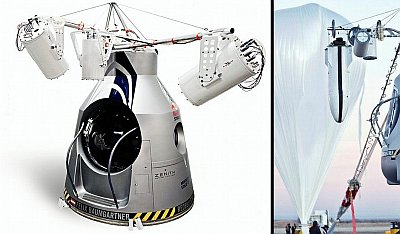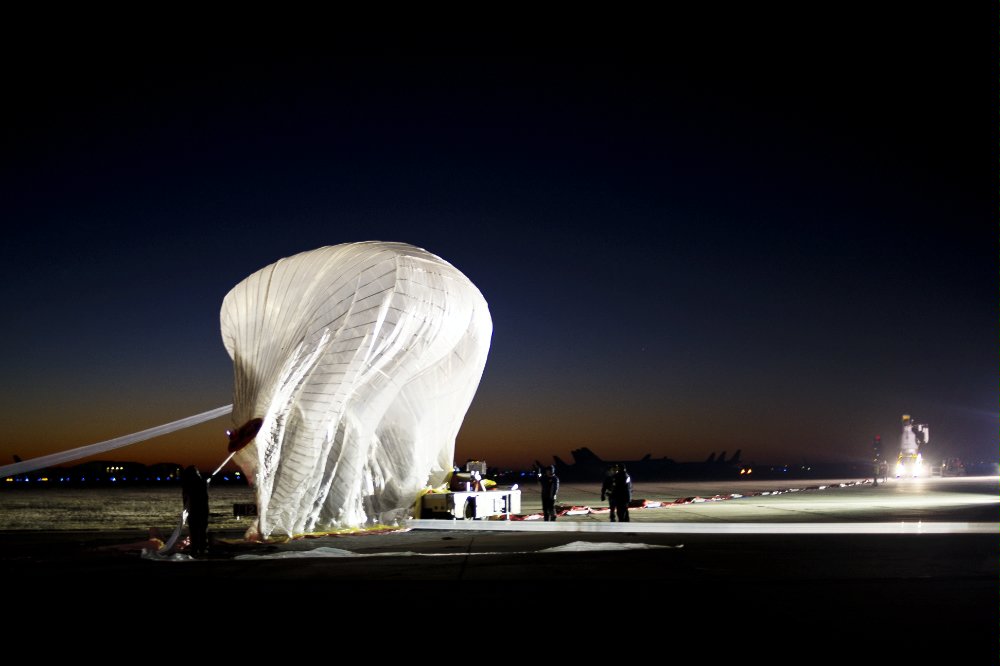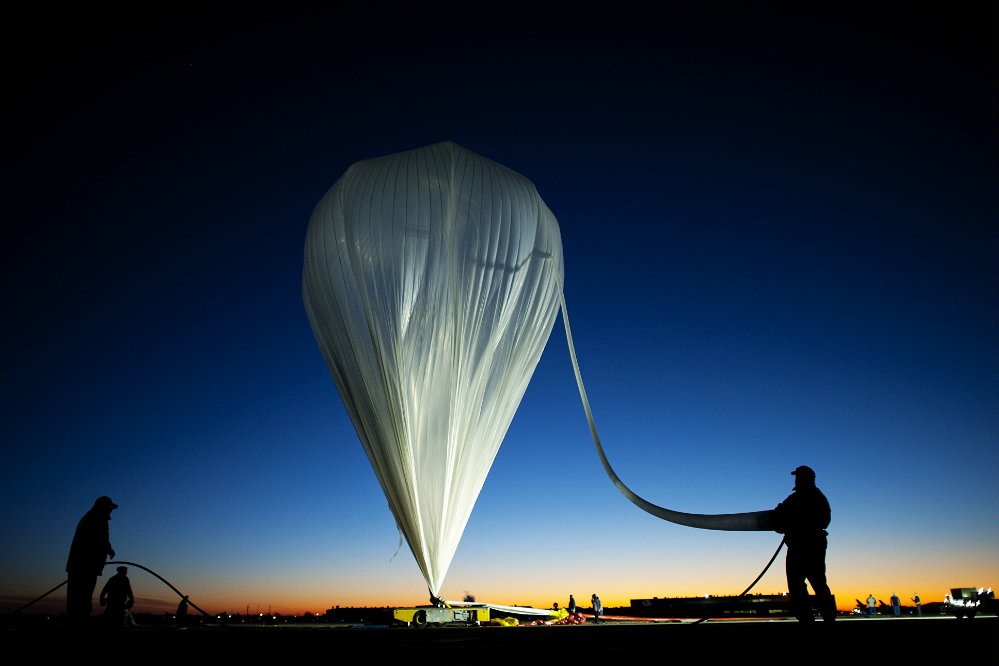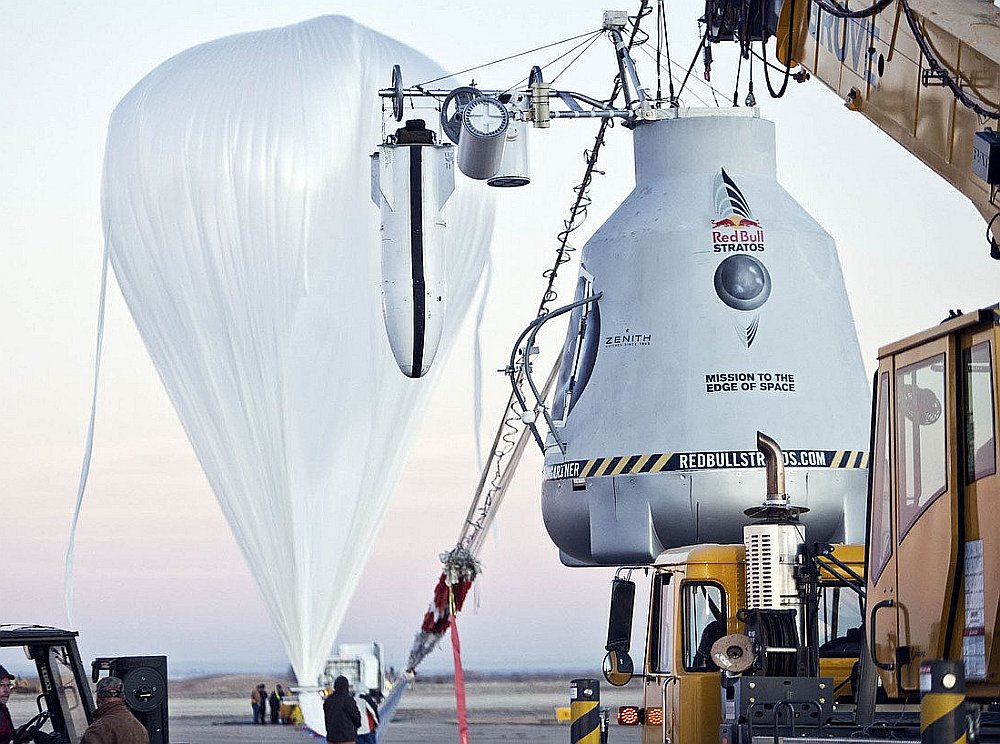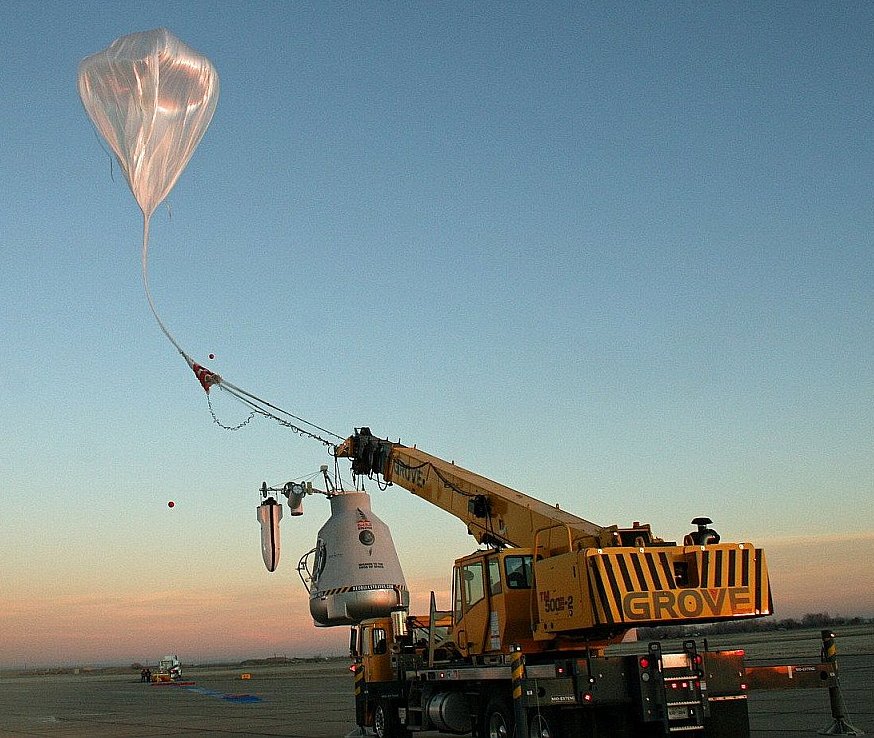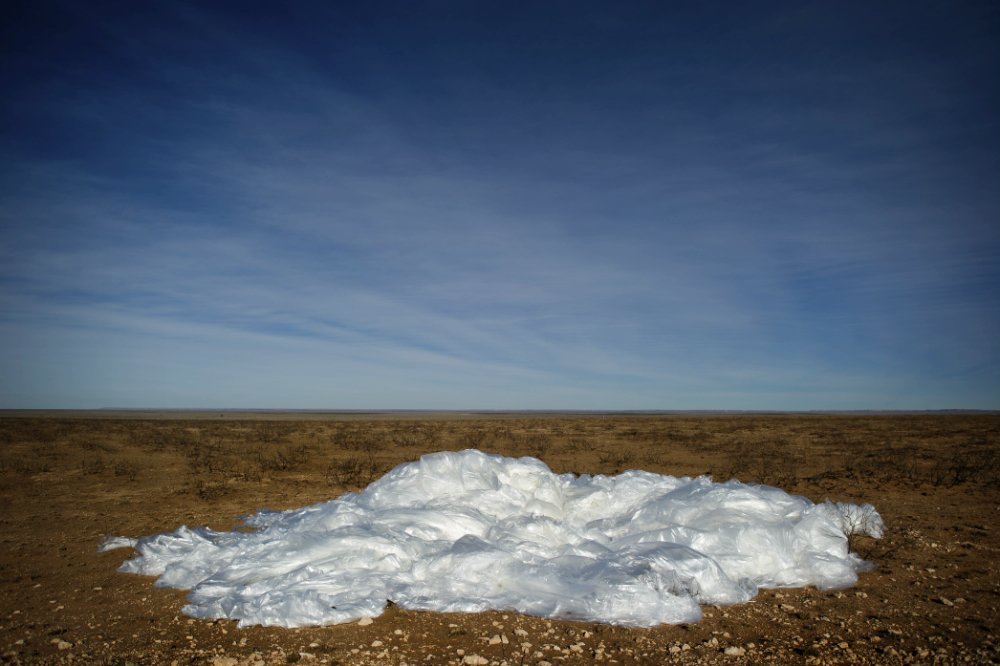Purpose of the flight and payload description
The Red Bull Stratos project, was the only non-government initiative that allowed a human being to perform with success an ascent to 120.000 feet in a stratospheric balloon and made a freefall jump, in the last 50 years. With the support of the Austrian company Red Bull GMBH as main sponsor, the extreme parachutist Felix Baumgartner as pilot -also from Austria- and a team composed by experts in aerospace medicine, engineering, pressure suit development, capsule creation and balloon operations, the project pursued to break four world records as well to obtain valuable data that may result of scientific interest for the development of extreme altitude bail-out techniques. Retired USAF Colonel Joseph Kittinger, whom previously held the record jump from 102,800 ft in 1960 acted as mentor of the project and as Mission Control's primary point of radio contact with the pilot during flight. The team was completed with Art Thompson (technical project director), Mike Todd (life support engineer), Jonathan Clark (medical director), Andy Walshe (high performance director), Marle Hewett (program manager & senior flight test engineer), Don Day Jr. (meteorologist) and more than 100 experts in several areas.
THE CAPSULE
The main element of hardware of the project was a pressurized capsule designed and built by Sage Cheshire, an aerospace firm from California, and was composed of four main elements. The inner structure is the pressure sphere which was molded from fiberglass and epoxy painted with fireproof paint, with a rolling door and windows made of acrylic. It have a diameter of 6 feet, and concontains displays, instrument panels, cameras and the sitting space of the pilot. During the flight it was pressurized to 8 psi, the equivalent to 16,000 feet above sea level, to reduce significantly the risk of decompression sickness without requiring the pilot to inflate his pressure suit.
Sourrounding the pressure sphere is the so called "cage" which cover and supports the capsule overall. It is made from welded tubes of chromium-molybdenum (a strong steel alloy used in aerospace industries) being the point where the capsule attaches to the balloon bearing the load for the parachute system.
Sourrounding both elements is the shell, the part of the capsule that is visible to the observer. It measures 11 feet high, and is made of foam-insulated skin covered in fiberglass and paint. It provides protection and insulation from the lower stratosphere temperatures.
Finally the 8-foot-diameter capsule base is the broadest part of the vessel, providing protection in the form of the base panel and crush pads. It comprises a 2-inch-thick aluminum honeycomb sandwich panel which protects the capsule from sharp objects during landing and also provides a mounting area for the balloon system control box and batteries. Outside the base are the crush pads, composed of cell-paper honeycomb covered by a fiberglass/epoxy fairing, similar to those often used on unmanned balloon-borne payloads. They were designed to handle 8 Gs on impact, thus providing shock absorption for the capsule's parachute landing.
The chair in which the pilot sits, has a sliding mechanism that allows it to move forward to get the lower half of his body out from the pressure sphere at the time of the jump. At the sides of the door there are two handrails that allows him to stand on the edge of the capsule, while maintaining stability.
Finally, a great number of High Definition (HD) cameras, remotely controlled from the Mission Control Center, are part of the capsule's hardware. Four of them are attached to the exterior base, eight are in the pressurized housings on the exterior, and three are on the interior. All HD cameras store the images to solid-state digital recorders on board, and are also routed to one of the three digital video transmitters for live viewing on Earth.
Fully loaded, the overall structure weights around 1315 kg.
INSTRUMENTED POD
For the two series of unmanned tests performed before the first piloted mission, the cargo consisted of the capsule described above but instead of the pilot, was installed in the exterior of the gondola a bomb-like shaped instrumented pod. To put a little humor, the team nicknamed the device as Felix "Bomb" Gartner
Its main function was to simulate the size and weight of the pilot for the real mission. All of the important data he would wear during the manned tests, satellite tracking and electronics, was stored inside the drop pod. After the capsule and pod landed under parachute in New Mexico, the team used the data to determine Felix's potential freefall speed at various altitudes, detect any spinning tendencies, and confirm GPS tracking.
Details of the balloon flight
Balloon launched on: 1/18/2012
Launch site: Roswell Industrial Air Center, New Mexico, US
Balloon launched by: ATA Aerospace
Balloon manufacturer/size/composition: Zero Pressure Balloon
End of flight (L for landing time, W for last contact, otherwise termination time): 1/18/2012
The objective of this second unmanned mission was similar to the first one series pèrformed in December 2011. The following items were tested during flight:
1) Balloon launch systems, hardware, cutaway and crew (flight train)
2) Test and confirm the Command, Control and Communication systems operating sequencers, tracking, and recovery chute
3) Test and verify GPS tracking and reefing procedures of the recovery and release mechanism
4) Data downlink and the following logging systems
� Drop pod to be released from capsule at altitude
� 3 GPS trackers/units independent form each other (1 on capsule, 2 on drop pod)
� Temperature sensors (together with other sensors for use in calculating record verification)
� FAI tracker (for record verification)
� Command, Control and Communication systems systems in capsule from ATA
� T-slim unit to transmit GPS signal from the Pod (same as chest pack).
� Chest pack components (GPS, TM Data Logger, XYZ accelerometer)
� 3 Cameras on pod and 3 cameras on the capsule.
� Optical tracking (performed by Flightline Films)
� RF signal testing for data downlink cross verified with the ATA system
The ascent to float altitude was normal and once there was released first the instrumented pod and then the capsule was separated from the balloon. Both elements landed succesfully in the New Mexico desert.
External references
- Red Bull Stratos web site of the project
- ATA Aerospace the company that managed the launch operations
- David Clark Co. designers of Felix Baumgartner's pressure suit
- Felix Baumgartner personal website
- Red Bull Stratos at Sage Cheshire website
- Space Dive documentary made by National Geographic and the BBC
11531If you consider this website interesting or useful, you can help me to keep it up and running with a small donation to cover the operational costs. Just the equivalent of the price of a cup of coffee helps a lot.

